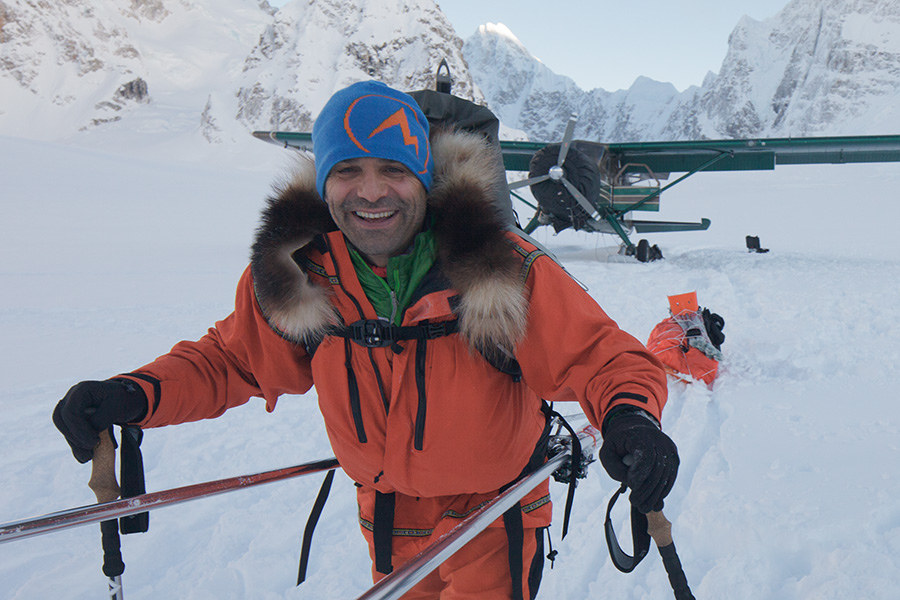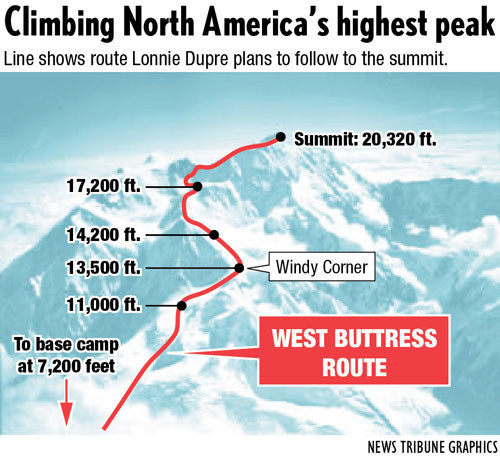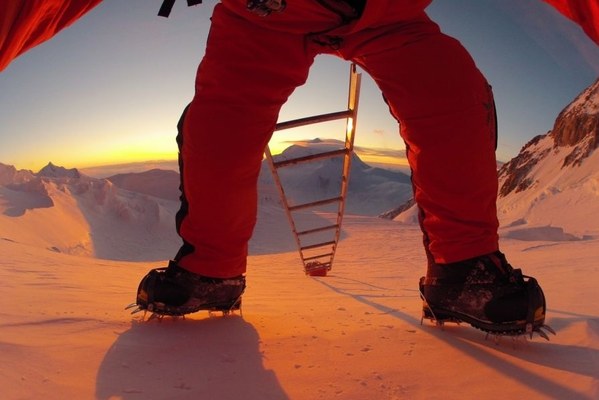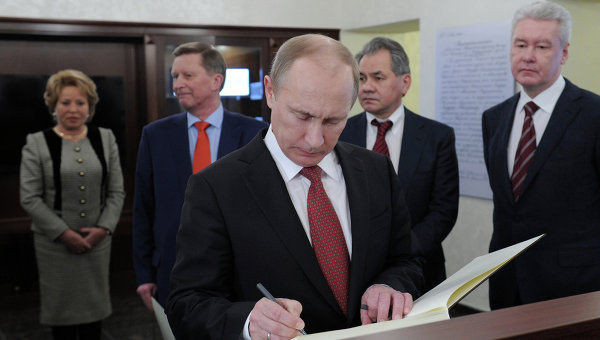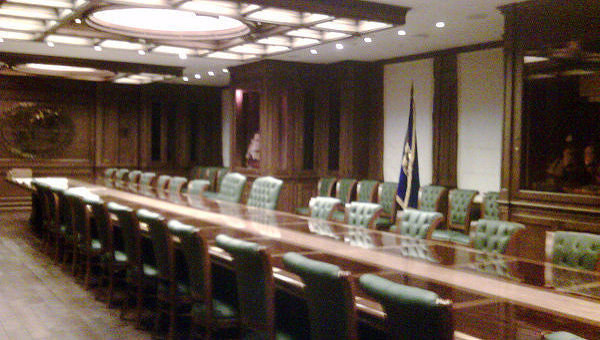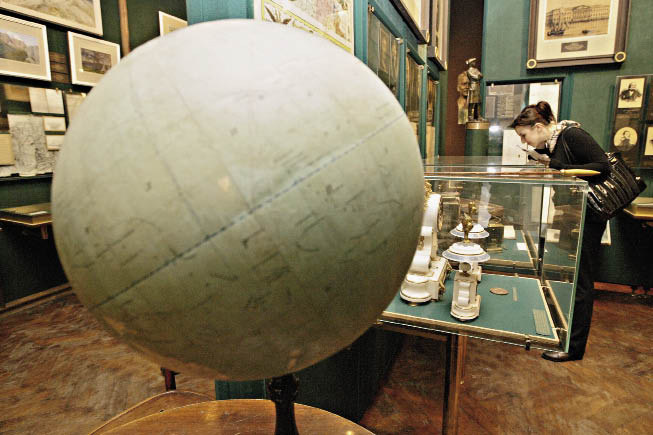All news: 20 January 2013
Polar Explorer Attempting January Denali Summit Again
There are two things you can say with certainty about polar explorer Lonnie Dupre. The man is certainly persistent in his pursuits and he has an undeniable affinity for the cold places of our planet. For the third straight year, Dupre has ...
There are two things you can say with certainty about polar explorer Lonnie Dupre. The man is certainly persistent in his pursuits and he has an undeniable affinity for the cold places of our planet. For the third straight year, Dupre has ventured to Denali (also known asMt.McKinley) inAlaskato attempt a solo summit of the mountain in January – the coldest, darkest and harshest time of year on that unforgiving peak.
With a height of 20,320 feet, Denali is the tallest mountain inNorth Americaand a difficult climb under the best of conditions. Only 16 climbers have ever managed to reach its summit during the winter and none were able to accomplish that feat in January when temperatures routinely fall below -60°F and high winds pummel the mountain's upper slopes. As if those conditions weren't difficult enough, blizzards can rage for days, depositing heavy snow across the mountain and creating potentially deadly avalanches as well. In short, it is pretty much one of the most inhospitable places on the planet at the moment.
Dupre, who has visited the North Pole on two separate occasions and navigated the length of theNorthwest Passageby dogsled, is clearly unphased by these challenges. As in years past, he is climbing with just the bare essential gear and supplies in an attempt to move as fast as possible. He hasn't even bothered to bring a tent on the expedition choosing instead to dig a series of snow caves that he can use for shelter at various altitudes.
Thus far the weather has been less than cooperative once again this season and Dupre spent the better part of the month waiting in the small town ofTalkeetnafor the skies to clear. Eventually conditions improved just enough for him to catch a flight out to the Kahiltna Glacier. From there, he was able to organize his gear and start the two-day trek to Base Camp, but so far he hasn't been able to climb any higher than 8800 feet. A heavy storm has fallen across the region and according to Dupre's support team at home, more than 7 feet of snow has fallen on his position in the past few days. That has made it impossible for him to climb any higher, as visibility as been reduced to almost nothing.
For now, our intrepid climber sits and waits for conditions to improve to see if he can actually make a serious attempt at the summit. In 2011 he was able to get as high as 17,200 feet and last year he reached 15,400 feet before being forced to turn back. Perhaps this time he is getting the bad weather out of the way early and it will clear up later in the month. Temperatures haven't been nearly as bad as they were on his previous attempts either, so that is a promising sign for possible success should the snow ever stop falling.
Dupre is documenting his climb with the hopes of making a film about his adventure. But rather than wait for that film to be released down the line, you can follow his progress
by Kraig Becker
Vladimir Putin: Opening of Russian Geographical Society headquarters in Moscow
Elbrus.
Vladimir Putin participated in the opening ceremony of the Russian Geographical Society headquarters in Moscow. The President toured the library and lecture-hall, and visited the multi-purpose media studio, which connects the headquarters ...
Vladimir Putin participated in the opening ceremony of the Russian Geographical Society headquarters in Moscow.
The President toured the library and lecture-hall, and visited the multi-purpose media studio, which connects the headquarters via videoconference with all of the Society’s offices throughout the nation.
The ceremony was also attended by the Russian Geographical Society president and Defence Minister Sergei Shoigu, Moscow Mayor Sergei Sobyanin, and members of the Society’s Board of Trustees, which is chaired by Vladimir Putin.
The Russian Geographical Society was founded by the Russian Emperor Nicholas I in 1845. Since its creation, its goal has been to collect and disseminate geographical data onRussia. With historic headquarters inSt Petersburg, the Society has offices operating in 81 Russian regions.
Source: eng.kremlin.ru
Rarely is to be found in one place such a high-level company. Surprising. Red.
* * *
PRESIDENT OFRUSSIA VLADIMIR PUTIN:
Friends, I congratulate you all on the opening of the Russian Geographical Society headquarters inMoscow. This is a pleasing and important event for everyone who loves our country, who is interested in its history and its culture, who cares about and values the traditions of our peoples.
I would like to particularly thank the Mayor of Moscow as it wasMoscowcity hall who provided this building, allocated funding for its renovation and organised the repairs. I also want to thank members of the Board of Trustees for helping to bring together everything that we have on these premises today.
I must also note that we have Russian Geographical Society offices open in 81 of theRussian Federation’s regions. But unfortunately, not all of these offices have their own buildings, even though that is very important and would not be difficult to achieve. Russian Geographical Society offices would certainly fill a very significant niche for those people who, as I said earlier, are truly and actively interested in the history, ethnography and traditions of our peoples.
These offices could serve as gathering places for scientists, public figures and, first and foremost, young people who want to devote part of their lives – or their entire lives – to their nation. Without the knowledge that is provided by the Russian Geographical Society, it would be actually impossible to do this properly and enjoyably.
The Russian Geographical Society has always had a tradition which was maintained even when the Society nearly ceased its existence, but its premises still remained inSt Petersburg, the tradition of accumulating and effectively using various items. These are not just materials pertaining to scientific research, although that, too, is very important; they also include libraries, which have already been mentioned and which are starting to be replenished or created anew.
I am asking all the members of the Board of Trustees to aid in replenishing these pools, and some of our colleagues are already actively participating in their replenishment. I promise that for my part, I will do the same, and I hope that the stocks will be much in demand.
We certainly should apply a modern approach; we should transfer all the holdings to a digital format and establish effective partnerships with archiving institutions, regional museums and other regional centres in order to set up a modern, highly accessible method for allowing these materials to be used by everyone who would like to use them.
I sincerely congratulate all of us on this event; I wish the new home of the Russian Geographical Society success and very much count on both the people present today and everyone who loves our country to get involved in the Society’s work. Of course, this will largely depend on the media. In this respect, I would like to thank Mr Dobrodeyev [CEO of the National State Television and Radio Company (VGTRK)]. You have come up with a brilliant TV programme, and the team consists of very interesting people who are enthusiastic about their work. The TV programme really is designed for millions of our people and, in my view, has a very good approach to presenting interesting facts and information that are of significance for our society.
Once again, I congratulate all of you. Thank you very much.

